Passive sun & shade harvesting case studies—ancient sites
• White House ruin, Canyon de Chelly, Arizona, USA
• Montezuma’s Castle ruin, Camp Verde, Arizona, USA
• Acoma Pueblo, New Mexico, USA
I am amazed by the high level of awareness many ancient cultures had—and still have—in regards to the changing seasonal path of the sun, and how they have integrated this awareness into their lives and their design choices. These photographs were taken at various sites on the summer and winter solstices to illustrate these cultures’ wise use of passive sun & shade harvesting design, and practice of maintaining solar rights for all.
Solely with these simple, free, passive strategies I found these ancient sites were 10˚ to 20˚F (5.5˚ to 11.1˚C) degrees warmer than ambient temperature in winter,
and 10˚ to 20˚F (5.5˚ to 11.1˚C) cooler than ambient temperature in summer.
White House ruin, Canyon de Chelly, Arizona, USA
Latitude 36.1˚N
Elevation 5,000 feet (1,524 meters)
Average ambient winter high 44˚ F (6.6˚ C)
Average ambient winter low in January 15˚ F ( -9˚ C)
Average ambient summer high in July 91˚ F (33˚ C)
Built around 1060 A.D.
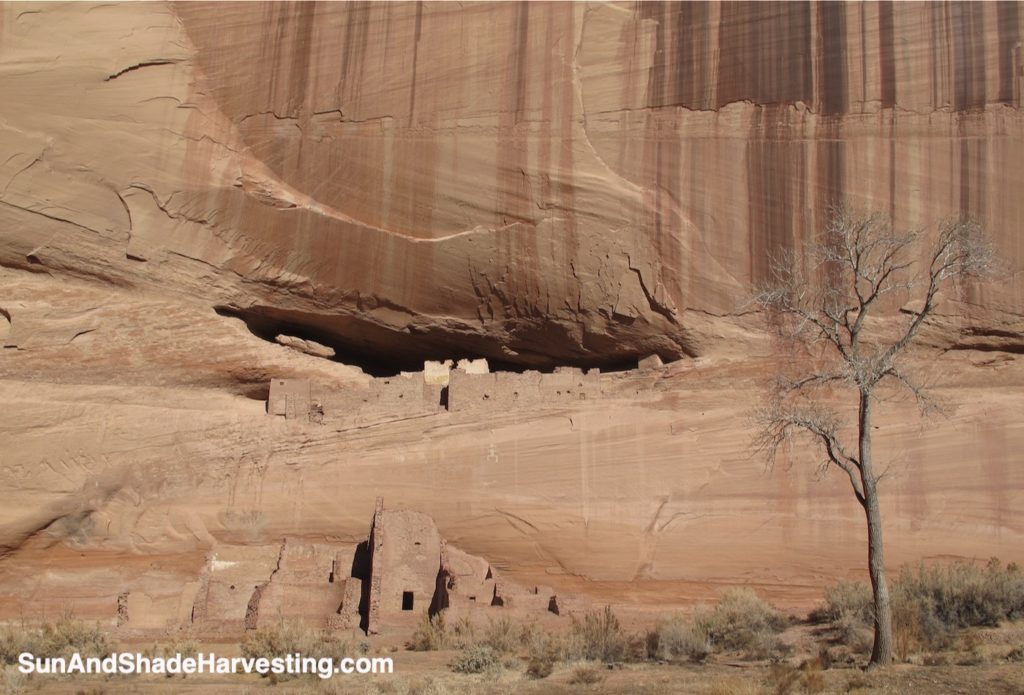
Built around 1060 AD. 36.1º N latitude, elevation 5,000 ft (1,524 m) Average ambient winter high 44˚F (6.6˚C). Average winter low 19˚F (-7.2˚C) The orientation of the buildings is ideal for passive winter heating and lighting because the longest wall area faces the winter sun to the south. In addition, the roof-like natural overhang still lets in the full solar exposure of the winter sun that travels low across the southern horizon. We can design our modern buildings to do the same. I took this photo standing due south of the ruin. Photo: Brad Lancaster
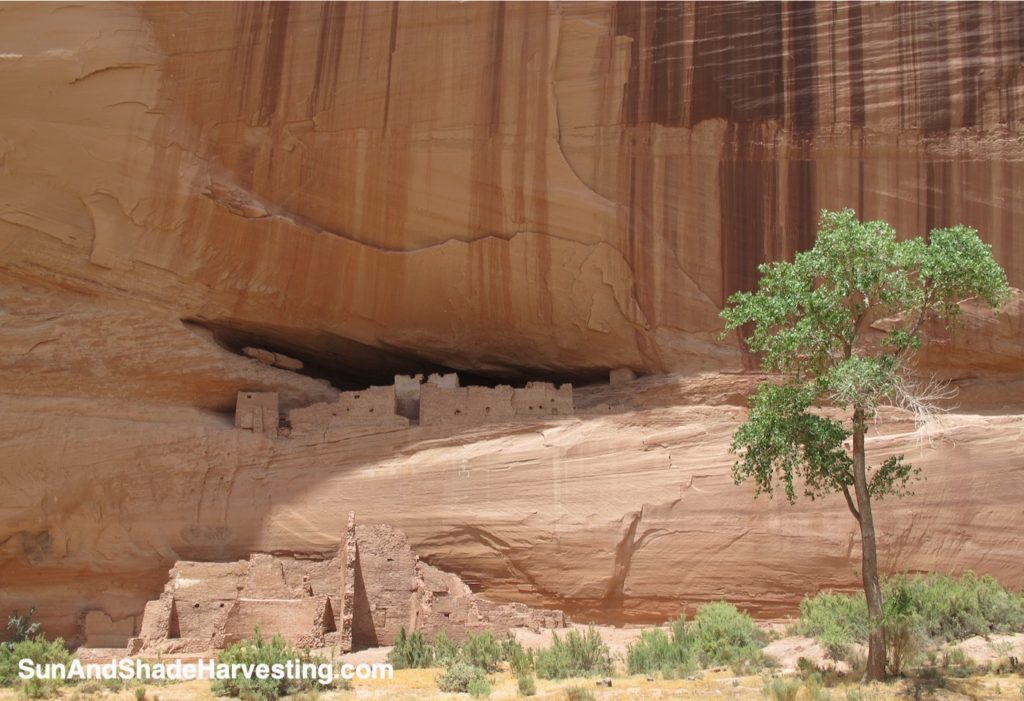
Built around 1060 AD. Average ambient summer high 90˚F (32.2˚C) The orientation and placement of the buildings is ideal for passive summer shading and cooling. The natural overhang shades out the majority of the hot noonday sun that sits high in the sky—we can design our modern buildings’ roof overhangs or awnings to do the same. The cliff also shades out the hot morning and afternoon summer sun that rises in the northeast and sets in the northwest—we can design our modern buildings and gathering spaces to be similarly shaded and cooled with covered porches, trellised vines, and/or shade trees on the east and west. Photo: Brad Lancaster
Montezuma’s Castle ruin, Camp Verde, Arizona, USA
Latitude 34.5˚N
Elevation 3,147 feet (959 meters)
Average ambient winter high temperature 55˚ F (13˚ C)
Average ambient winter low temperature 32˚ F (0˚ C)
Average ambient summer high temperature in July 86˚ F (30˚ C)
Built between 1100 – 1350 A.D.
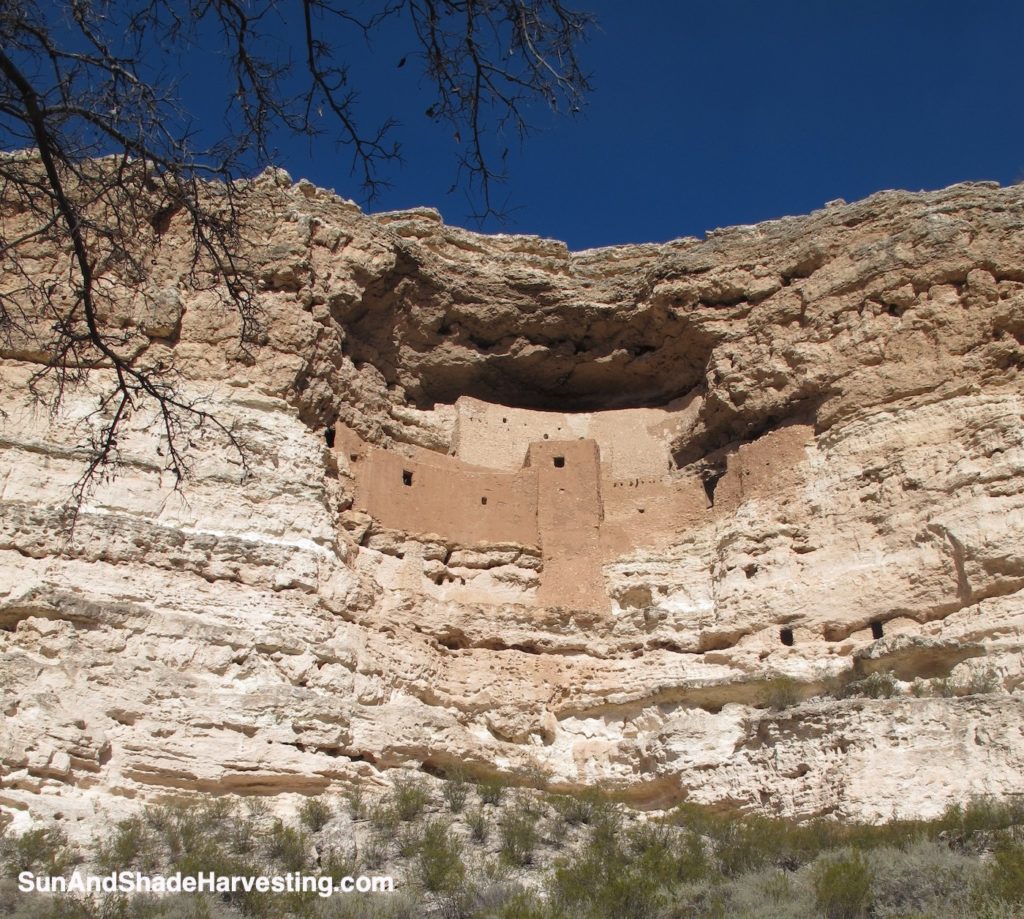
Built between 1100-1350 AD.34.5º N latitude, elevation 3,147 ft (959 m) Average ambient winter high temperature 55˚F (13˚C). Average winter low temperature 32˚F (0˚C).The orientation of the buildings is ideal for passive winter heating and lighting because the longest wall area faces the winter sun to the south. In addition, the roof-like natural overhang lets in the full solar exposure of the winter sun that passes low across the southern horizon. We can design our modern buildings to do the same. I took this photo standing due south of the ruin. Photo: Brad Lancaster
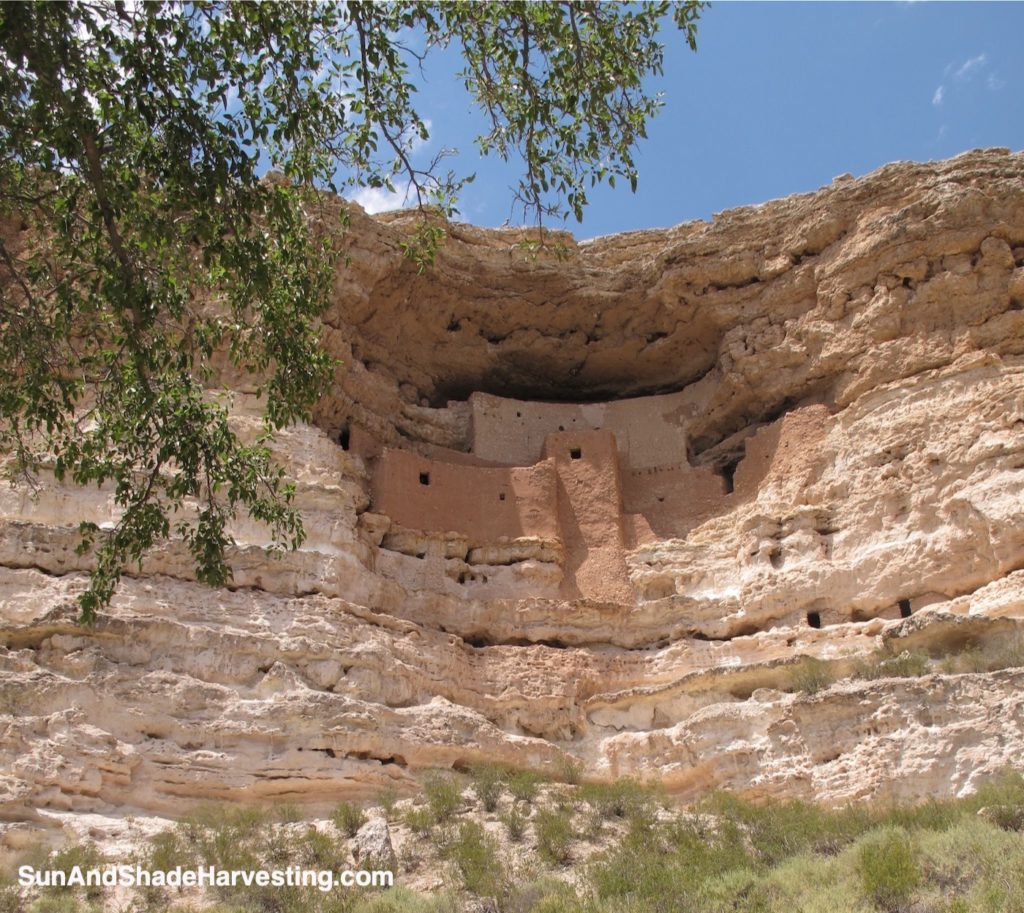
Built between 1100-1350 ADAverage ambient summer high temperature 100˚F (37.7˚C)The natural overhang shades out the majority of the noonday sun that sits high in the sky—a well-designed roof overhang or awnings could do the same in modern buildings. The cliff shades out the summer’s hot morning and afternoon sun in the east and west—we can design our modern buildings and gathering spaces to be similarly shaded and cooled with east- and west-facing covered porches, trellised vines, and/or shade trees. Photo: Brad Lancaster
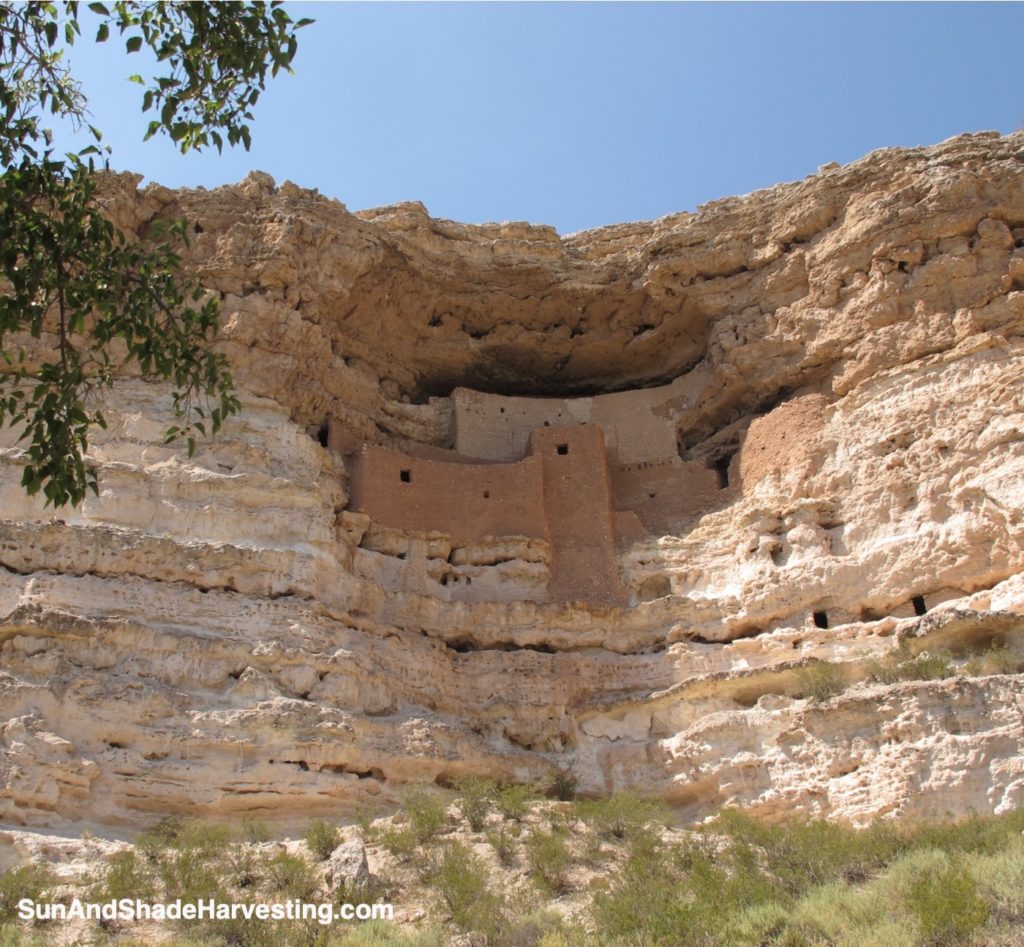
Photo: Brad Lancaster
Acoma Pueblo, New Mexico, USA
Latitude 34.8˚N
Elevation 7,000 feet (2,100 meters)
Average ambient winter low 17˚ F (-8.3˚C)
Average ambient summer high in July 89˚ F (31˚ C)
Built between 1100 – 1250 A.D.
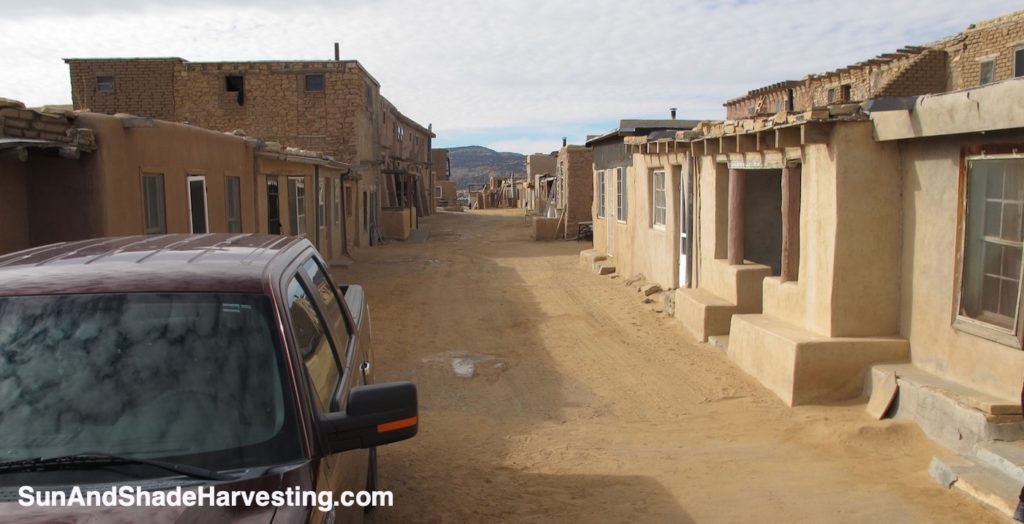
Built between 1100 – 1250 AD.34.8˚ N latitude. Elevation: 7,000 feet (2,100m) Average ambient winter high 47˚F (8.3˚C). Average winter low 17˚F (-8.3˚C).For over a 1,000 years there has been a “solar rights ordinance” on the mesa, a cultural practice that prohibits people from building so high or so close to their northern neighbors’ that they would shade out their access to the winter sun’s heat, light, and power via their south/winter-sun-facing windows, doors, and walls. Photo: Brad Lancaster
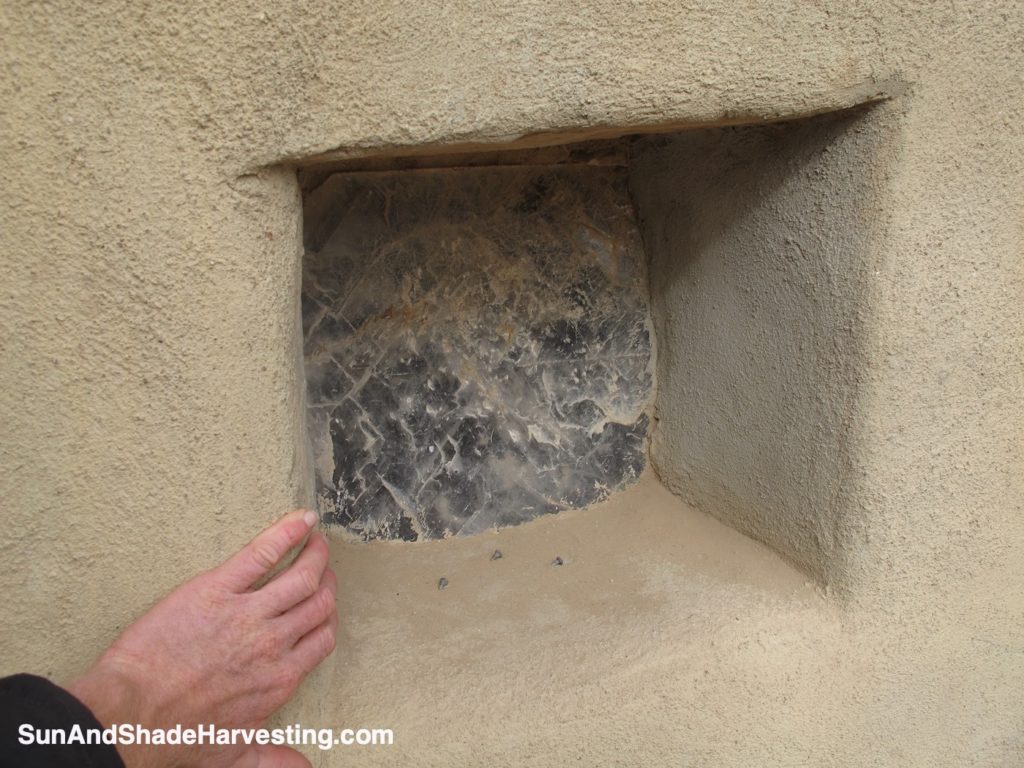
This technology predates the use of glass in the Americas. Photo: Brad Lancaster
For more
information on how to design and implement passive sun & shade harvesting strategies at all latitudes, and irrigate the living ones with free on-site water sources…

Volume 1
Volume 1 has detailed sun & shade harvesting info on:
Volume one has resource and information on:
- Orienting buildings and landscapes to the sun
- Designing roof overhangs and awnings to optimize winter sun and summer shade• How to choose and size windows to optimize passive heating and cooling
- Solar arcs
- Sun & shade traps
- Maintaining winter sun access with winter-solstice shadow ratios and solar rights• Sun angles and path for any latitude and season
- How to find your way, and true north or south, with the sun and other stars• How to place vegetation or structures to maximize natural ventilation or windbreaks
- Table comparing the energy consumed, water consumed, and carbon emitted of active and passive clothes drying, water heating, food storage & prep, lighting, heating, and cooling strategies.
